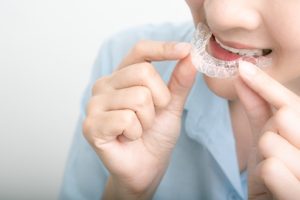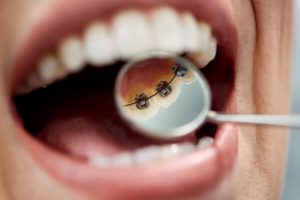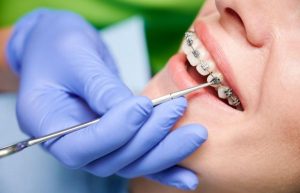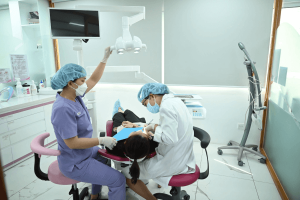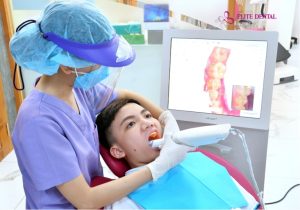Table of content
Clear aligners by Invisalign represent a modern orthodontic technique, perfect for addressing issues like crowded, misaligned, or protruding teeth, helping you achieve a radiant, aligned smile. Known for their convenience, efficacy, and aesthetic appeal, Invisalign clear aligners have become increasingly popular. However, many wonder whether Invisalign hurts and what can be done to alleviate any discomfort. Elite Dental is here to answer your questions—read on for more insights!
1. Does Invisalign cause pain?
Invisalign aligners are an orthodontic choice favored by those who regularly interact with others or work in roles that require a polished appearance. Most patients who have chosen Invisalign report that it is comfortable to wear and does not typically cause significant pain. Several standout factors contribute to this:
- Unlike traditional braces, Invisalign aligners are made from clear, flexible plastic that fits snugly over your teeth. The gentle pressure used to move the teeth is less intense than the tightening of brackets and wires, resulting in a more comfortable experience. Additionally, the aligners are transparent, ensuring aesthetic appeal for those concerned about visible braces.
- Additionally, with the help of advanced 3D imaging, your dentist designs aligners that fit precisely to your teeth, with smooth edges that avoid irritating your gums.
- Invisalign aligners can be easily removed for eating and cleaning, providing comfort and convenience that’s often lacking with traditional braces.
Nevertheless, because orthodontics works by gradually shifting teeth into position, some discomfort is inevitable. This varies by individual pain tolerance; some people experience little to no discomfort, while others may feel slight tension, tenderness, or mild soreness, particularly during the initial days or after switching to a new set of aligners.
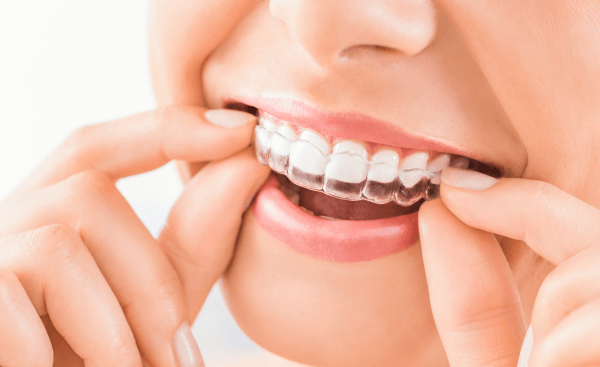
So, does Invisalign hurt? The answer is yes, but only mildly and temporarily. The soreness typically subsides within a day or two as your mouth adjusts.
Are invisible aligners effective? This is a common question for those encountering this treatment option for the first time. In fact, invisible aligners are trusted by many users and reputable dental clinics due to their outstanding benefits, such as pain-free treatment, flexibility, and aesthetics. These advantages provide a completely new…
2. Factors That May Affect Pain Levels with Invisalign
While individual pain tolerance plays a significant role, other factors can also cause discomfort during Invisalign treatment:
2.1. Poor fit of aligners
Nhiều người thường thắc mắc niềng răng trong suốt Invisalign có đau If aligners do not fit properly or sit unevenly on the teeth, they may cause discomfort. Choosing a clinic with experienced orthodontists and advanced 3D scanning technology is crucial. Misaligned or poorly fitted aligners can lead to irritation in the gums and increased sensitivity.
2.2. Substandard aligner materials
Regular aligners are typically crafted from specialized medical-grade plastic, which has been rigorously tested and proven safe for users. However, some smaller, budget-focused dental clinics may offer cheaper, unauthorized aligners that imitate the Invisalign brand. These aligners, made from substandard, unverified materials, can potentially lead to allergic reactions, mouth ulcers, foul breath, and may even harm the jawbone over time.
Since its establishment in 2012, Elite Dental has earned a reputation for providing reliable Invisalign treatments with consistent results. At Elite, patients can expect dedicated, personalized service and results they can trust.
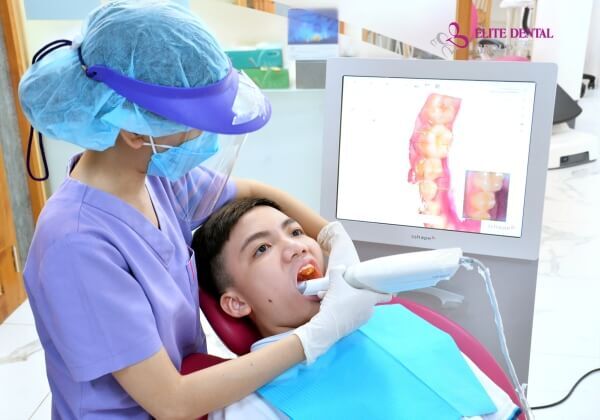
Our experienced team of doctors with over a decade of clinical practice, continuously trained by Invisalign, is here to guide you through each step of your treatment. We use advanced technology like digital X-rays for accurate imaging and 3D scanning to ensure a precise fit.
Furthermore, Elite Dental exclusively uses genuine Invisalign aligners made of FDA-approved materials, guaranteeing both safety and effectiveness. We’re also a proud Platinum Provider, certified by Invisalign, so you can trust that all products and services are of the highest quality, ensuring a healthy, confident smile.
3. Tips for reducing discomfort during Invisalign treatment
Our dentists at Elite Dental have compiled some helpful tips to reduce any initial discomfort:
- Wrap 2-3 ice cubes in a cloth and gently press them against your cheeks to alleviate soreness.
- Avoid extremely hot, cold, or hard foods during the first few days. Opt for soft foods like soup, yogurt, or smoothies.
- Brush with a soft-bristle toothbrush and use dental floss and mouthwash to keep your mouth clean and prevent irritation.
- Follow your dentist’s instructions on wearing and handling the aligners to avoid unnecessary gum irritation.
- Attend scheduled check-ups so your dentist can monitor your progress and address any potential issues.
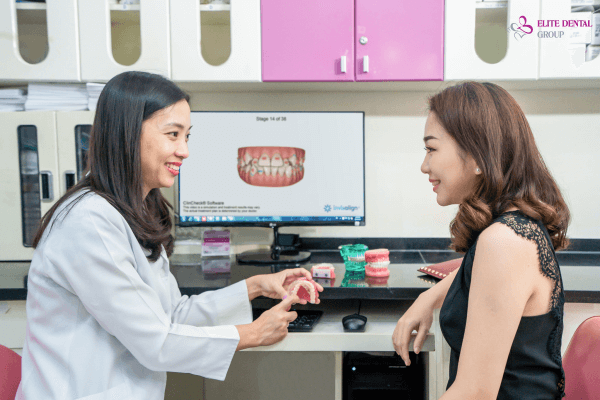
> Tips for you: Tips when you use braces
With these insights, we hope we’ve answered your question about Invisalign pain. Any discomfort is typically minor and short-lived, subsiding as your mouth adapts to the aligners. Choosing a reputable provider with skilled professionals is key to a smooth treatment journey.
Contact Elite Dental today for a detailed Invisalign consultation, the latest promotions, and a personalized quote tailored to your needs!
> Tips for you: Do braces hurt? Which stage is the most uncomfortable?


